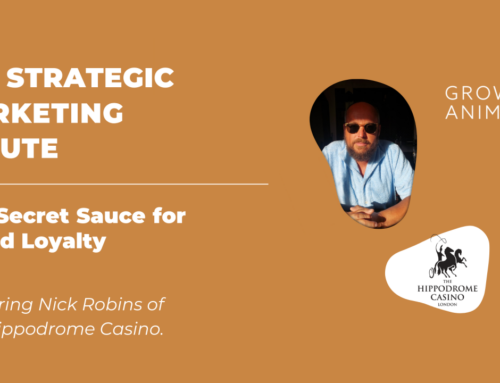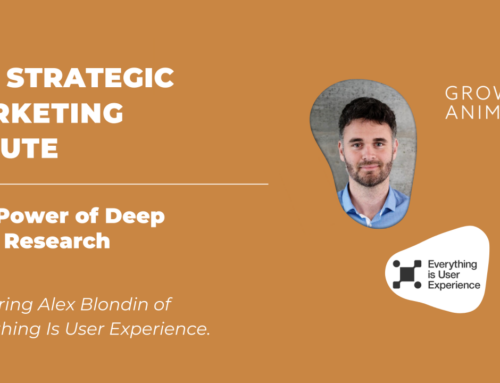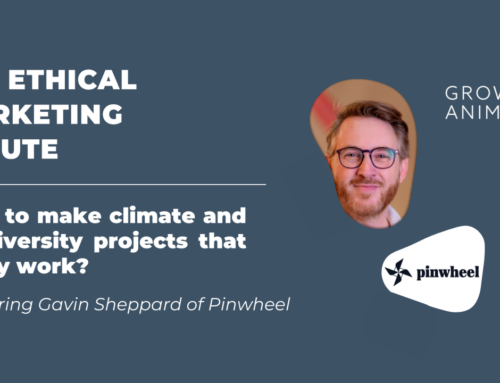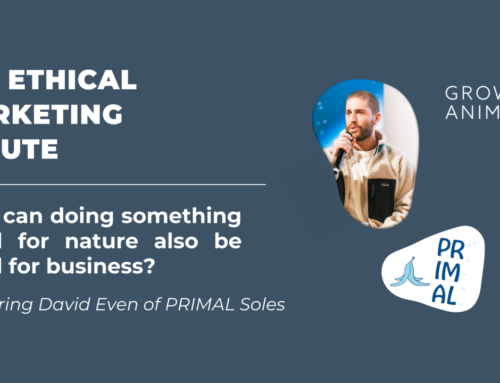5 things psychotherapy can teach us about human marketing
1 min read

“I’m not connecting to the real world”, “What impact am I actually making?”. This was me, on repeat, 12 years ago. All a bit depressing, when after 10 years hard work, my marketing career wasn’t providing the job satisfaction I once thought it would. It didn’t take deep self-analysis to realise that I needed to do something more “human”.
Fast forward another 12 years, a second career in psychotherapy has given me the privilege of accessing the lives of countless individuals, couples, young people and families. Unrivalled insights, positive and negative. The struggles and the small wins. Humbling, yet frustrating. It has been really rewarding having the opportunity to work so closely with the complexities of human behaviour everyday.
But I’ve never lost my passion for brands and communications and the development in strategies, channels and focus has been fascinating to follow. The explosion of experiential campaigns, clever digital touch points and most interestingly for me, the emergence and development of “human marketing”.
There are countless definitions and examples of what falls under the “human” banner but it is very apparent that there is more to it than the gimmicky buzzword and corporate jargon I once thought it was. Working back in communications, it has become clear that my two careers aren’t so separate after all and in fact, my marketing head could learn a great deal from its psychotherapy counterpart.
So what is human marketing?
Growing up my salesman dad always told me people buy from people. As it turns out he was a bit ahead of his time. In an era where big budget TV advertising was the holy grail and a brand just needed to align its 4 P’s to satisfy the customer, the human touch seemed at best a nice to have. Even up until fairly recently a truly “human” campaign, such as Dove’s campaign for real beauty, was recognised as a novel idea.
But a post Covid marketing world looks very different. Planned strategies and campaigns have been scrapped and scaled down teams are making huge decisions, much quicker than usual, over zoom calls. Most brands recognise our need for help and comfort at this uncertain time and as such, 89% have released a hastily developed Covid related campaign.
There are very few brands that haven’t claimed “we are here for you”, that “we are helping your community” or ‘we are all in this together”. When we are being hit with the same rhetoric, the real key to human marketing is understanding why some of these campaigns have made us feel warmer and why some have left us squirming in our seats and truly turned off?
Whilst our behaviour and priorities have drastically changed, the key elements of a successful human campaign still centres around how communications land with the consumer in 3 key ways.
Honesty
We need a brand we can trust. Trust that the product or service will serve our needs but also that it is being delivered in a socially conscious way. We are not interested in false claims or over-promising. We want brands to admit mistakes – after all, we all make them.
Transparency
We want to know how we are receiving our goods or service and where they come from. We need to know about the supply chain, how pricing is set, and what the business stands for.
Connection
We need to connect to a brands personality. It has to be natural and relatable, not forced. We need to feel understood, like a valued individual, that we’ve been heard and invested in.

What the principles of psychotherapy can teach us
As I’ve started to work with more clients to humanise their marketing and communications strategies, it has become very clear that the principles involved in psychotherapy have a large part to play in ensuring honesty, transparency and connection is achieved authentically.
1.) Listen more
Don’t presume you know everything there is to know about your potential clients. It is easy to jump to conclusions and make sweeping judgements. Keep learning, keep understanding. Demonstrate you’ve been listening to changes in their needs. Ask for feedback and work with it.
Example: McDonald’s customers in the UK were clear in telling them to replace the 1.8 million plastic straws they get through a day with paper ones. With customer protests so public the change felt they had really listened.
2.) Build the relationship
Just as in therapy, relationships are key. It is not about instructing someone to do something. Human behaviour dictates we are much more likely to act if we have come to our own conclusions about what to do. Be a gentle guide, highlight the benefits, persuade don’t sell and focus on the long term goals gained from loyalty. We look more favourably on brands when we don’t feel the relationship is seller/buyer.
Example: Amex invite customers to join their “club”. With a club/member relationship we feel we’ve been invited to join a group which instantly evokes more of a connection than a supplier/buyer relationship.
3.) Show human qualities
In therapy, it is really difficult to work with clients who build a brick wall. It takes time to break it down and for clients to feel the benefits of opening up. In the same way, brands need to connect to our emotions, understand our vulnerabilities and not shy away from showing their own. Don’t be afraid to say sorry. Be humorous, laugh at yourself.
Example: Innocent is the true definition of a human brand. You only need to look at their Twitter feed to see the connection they form through everyday language, humour and admitting when they get things wrong. The “Chief Squeezer” (CEO Douglas Lamont) recently admitted they still had work to do around equality. “We’ve realised that we need to do more to bring people from different backgrounds into our business and support them within it, and we’re actively working on improving this.”
4.) Talk about the tricky stuff
In therapy, we can’t shy away from the elephants in the room. Clients are there for a reason and the more they are able to voice the tricky stuff the more they get out of it. By the same token, if a brand is able to sympathetically and authentically tackle a taboo they will gain positive PR, customer connections and increased brand awareness.
Example: The bold, yet successful #wombstories campaign by Bodyform does just that using various channels to challenge taboos around menstruation endometriosis, infertility and miscarriage.
5.) Keep asking why?
Psychotherapists dig deep to help clients examine their “why?”. It should also be a brand insight managers job to know “why” their sector reacts, behaves and feels the ways that they do. To truly connect with their audience they need to look beyond the data, or at the very least sanity check it and recognise that just because it says ‘X’ doesn’t mean they have to do Y.
Therapists work with clients to find patterns, make unobvious connections and reflect them back. A successful brand campaign will also present consumers with something they already know but haven’t made a connection with. It makes them think “oh yes, that’s SO true!” and then talk about it – hopefully on social media.
Example: Three launched a campaign that centred on how many holiday photos were posted on social media whilst people are away. Understanding customer behaviour and reflecting it back caused a 90% increase in Three’s social conversation volume and a huge increase in brand metrics.

How can we integrate human marketing into digital applications?
We are bombarded with mountains of information all day every day, especially from digital channels. There is no chance we will even notice let alone retain or interact with even a fraction of it. As humans, we need to be selective and therefore the information needs to resonate with us and we need to connect to it in some way.
Not always easy digitally, but the most successful brands abide by the same principles:
Keep it simple, less is more, don’t overwhelm
Respect privacy – how much privacy will customers be happy to give up?
Focus on quality, not quantity
Don’t be intrusive or invasive – focus on value
Use storytelling – be mindful of what you’re saying and how you’re saying it
Keep it conversational, speak their language
Be transparent – why you are using automation such as a chatbot?
How do we remain ethical when practising human marketing?
As with some of the Covid campaigns, it can be more damaging “trying” to be human than not being human at all. Social media allows consumers to call out brands almost instantly if they feel they are not being authentic and 51% of consumers* have done it.
More than ever, behaviours and communications need to align. Stories need to be credible and believable, not because they are “trying” to but because a business practises what they preach. For example, using terminology like “environmentally friendly” but showing little effort in making products, packaging or the supply chain more sustainable isn’t going work. Talking about a need for diversity and inclusion if your board and top team are solely white, middle-class men can cause irreversibly damaging PR.
Employees are ambassadors, and the blurred lines of internal and external communication mean company information isn’t private for long anymore. Using employees as positive PR messengers and human storytellers of aligned messages can be a real force for the brand.
Conclusion
Whether COVID was the catalyst for more commonplace “human” approach or whether it just accelerated an inevitable process, most marketers would agree that such a drastic and rapid change in consumer behaviour and priorities has forced a change in strategy.
The biggest mistake some brands have made is trying to invent or “look” for a purpose. The only authentic way is to find it is by examining what you do and why you exist. It needs to come from who you really are not what you’d like your customers to think you are.
The speed in which marketeers have had to re-assess has been rapid and momentum doesn’t seem to be slowing down. Decision-makers are quickly weighing up the cost of doing nothing vs the cost of change. But many hands are being forced. Indeed some companies and agencies are now only working with brands with an authentic purpose.
In a post COVID world, it seems likely that only brands that connect with real-life and human connections will thrive.





